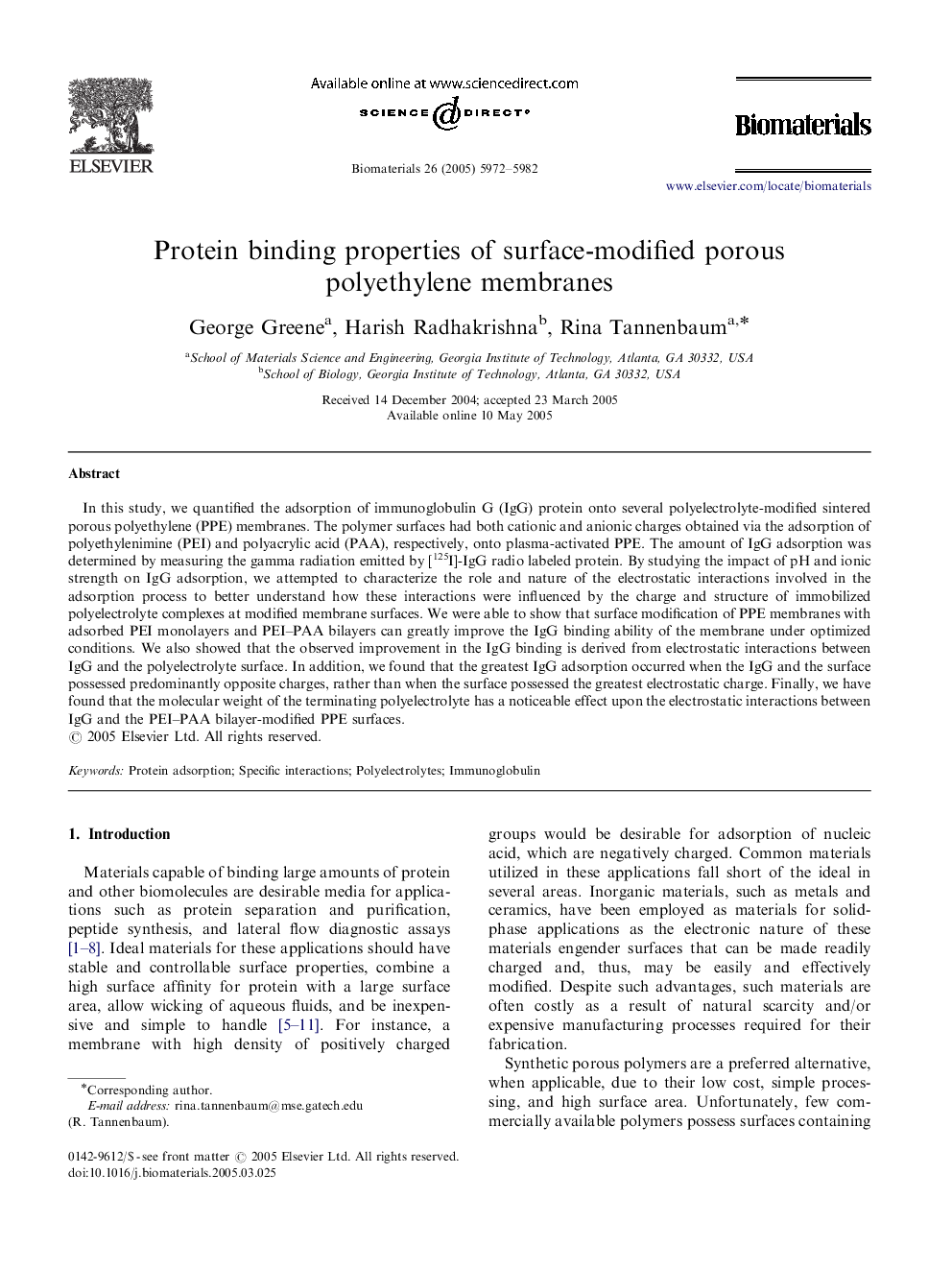| Article ID | Journal | Published Year | Pages | File Type |
|---|---|---|---|---|
| 12214 | Biomaterials | 2005 | 11 Pages |
In this study, we quantified the adsorption of immunoglobulin G (IgG) protein onto several polyelectrolyte-modified sintered porous polyethylene (PPE) membranes. The polymer surfaces had both cationic and anionic charges obtained via the adsorption of polyethylenimine (PEI) and polyacrylic acid (PAA), respectively, onto plasma-activated PPE. The amount of IgG adsorption was determined by measuring the gamma radiation emitted by [125I]-IgG radio labeled protein. By studying the impact of pH and ionic strength on IgG adsorption, we attempted to characterize the role and nature of the electrostatic interactions involved in the adsorption process to better understand how these interactions were influenced by the charge and structure of immobilized polyelectrolyte complexes at modified membrane surfaces. We were able to show that surface modification of PPE membranes with adsorbed PEI monolayers and PEI–PAA bilayers can greatly improve the IgG binding ability of the membrane under optimized conditions. We also showed that the observed improvement in the IgG binding is derived from electrostatic interactions between IgG and the polyelectrolyte surface. In addition, we found that the greatest IgG adsorption occurred when the IgG and the surface possessed predominantly opposite charges, rather than when the surface possessed the greatest electrostatic charge. Finally, we have found that the molecular weight of the terminating polyelectrolyte has a noticeable effect upon the electrostatic interactions between IgG and the PEI–PAA bilayer-modified PPE surfaces.
